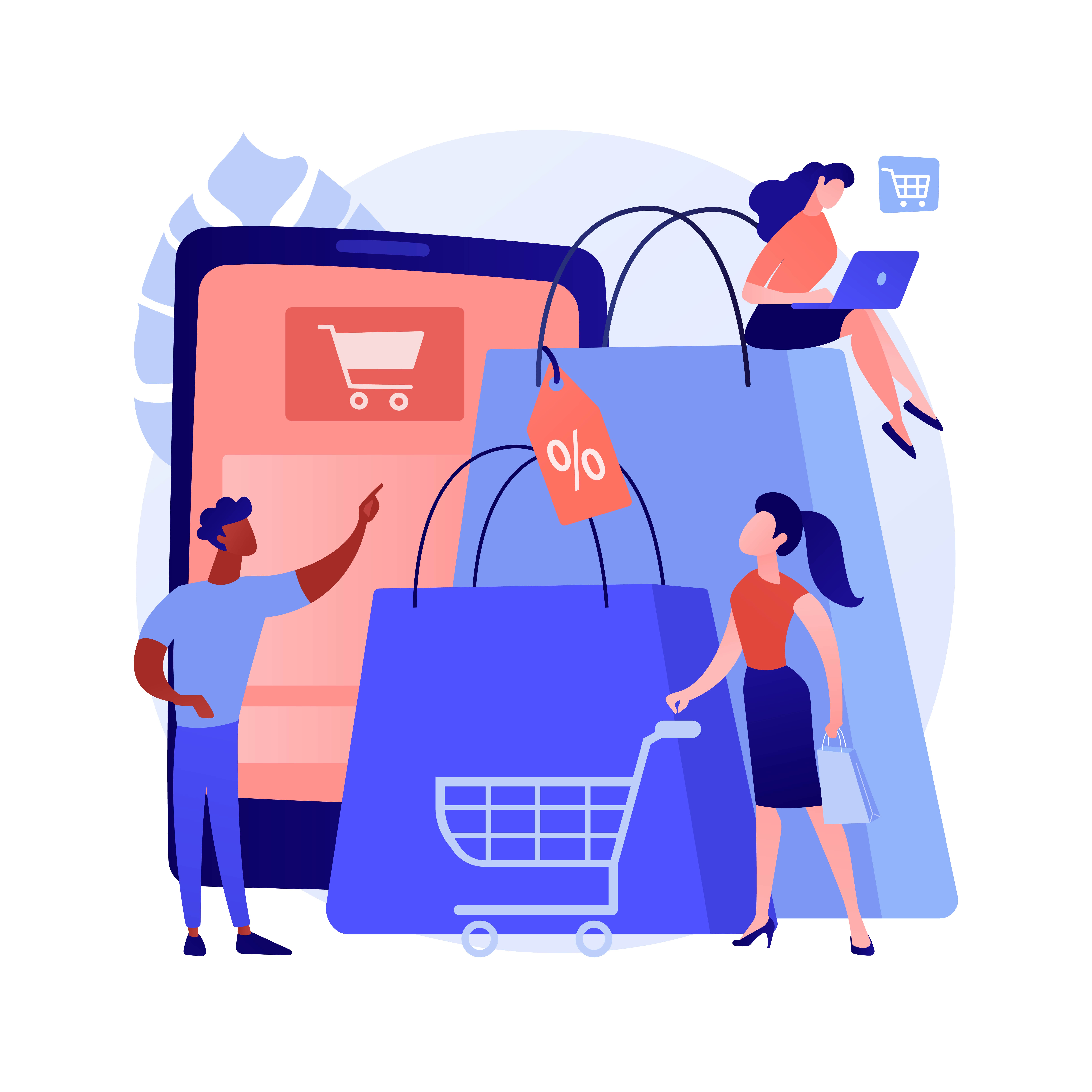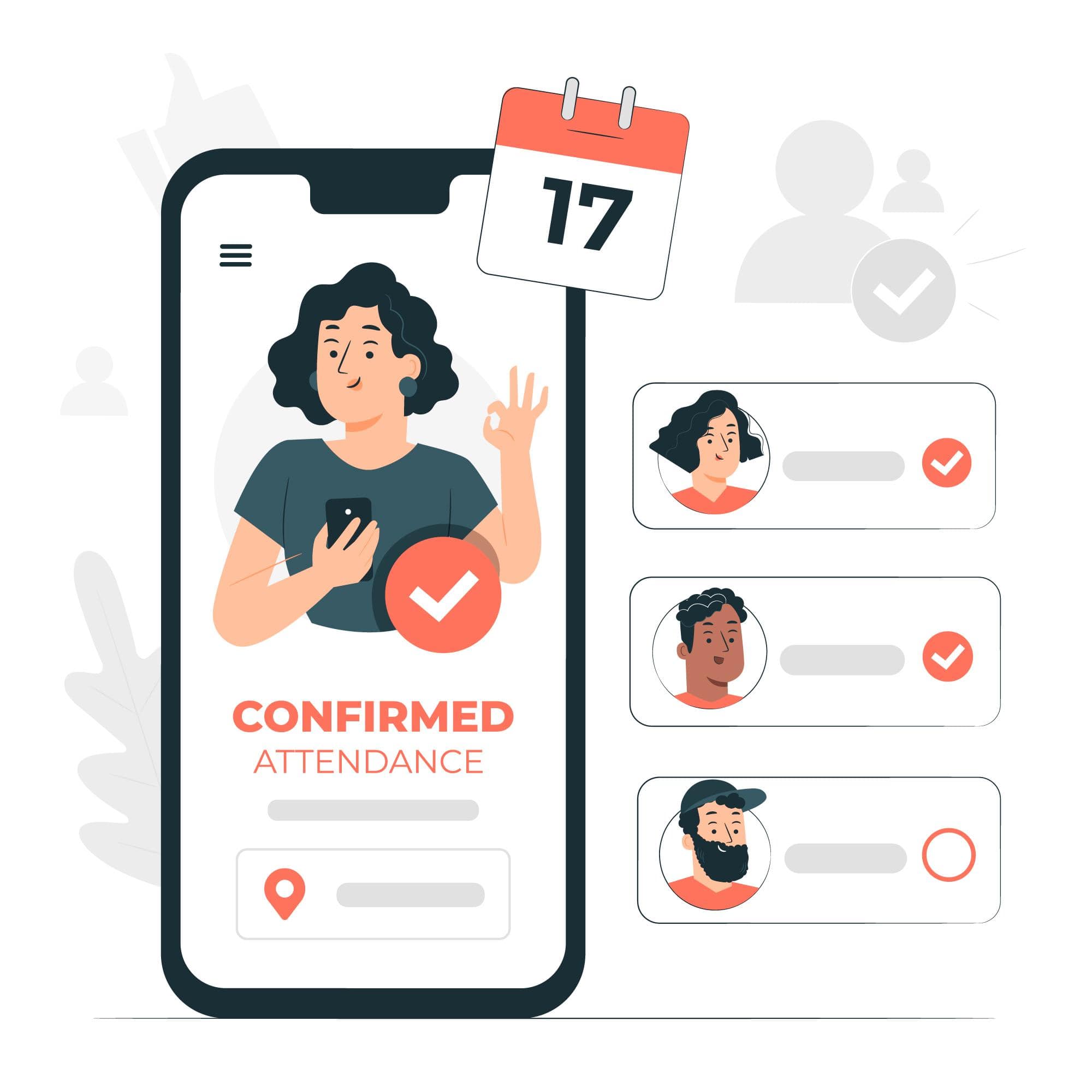Do you know the difference between cross-selling and upselling? If not, you could be missing out on sweet profits and happy customers. But don’t worry…
… Because in this post, you’ll learn all about cross-sells and upsells. These two sales techniques might seem similar, but trust me, they are not the same. We’ll break down how they’re different, why it matters, and how each technique can boost your sales in its own unique way.
I’ll also explain how combining these two sales techniques can be a match made in heaven for your business.
And to top it off, you’ll see some real-life examples of cross-selling and upselling in action. Who doesn’t love a good example, am I right?
So buckle up and get ready to upgrade your sales game. Let’s get to it!
What is Cross-Selling?
Cross-selling is when you sell extra stuff to someone who’s already buying from you.

These extra items should be something that goes well with your customer’s primary order.
Let’s say, for example, you’re selling online courses (which, coincidentally, we happen to know a lot about!).
If someone’s buying one of your courses, you could cross-sell them a workbook or template that goes with the course.
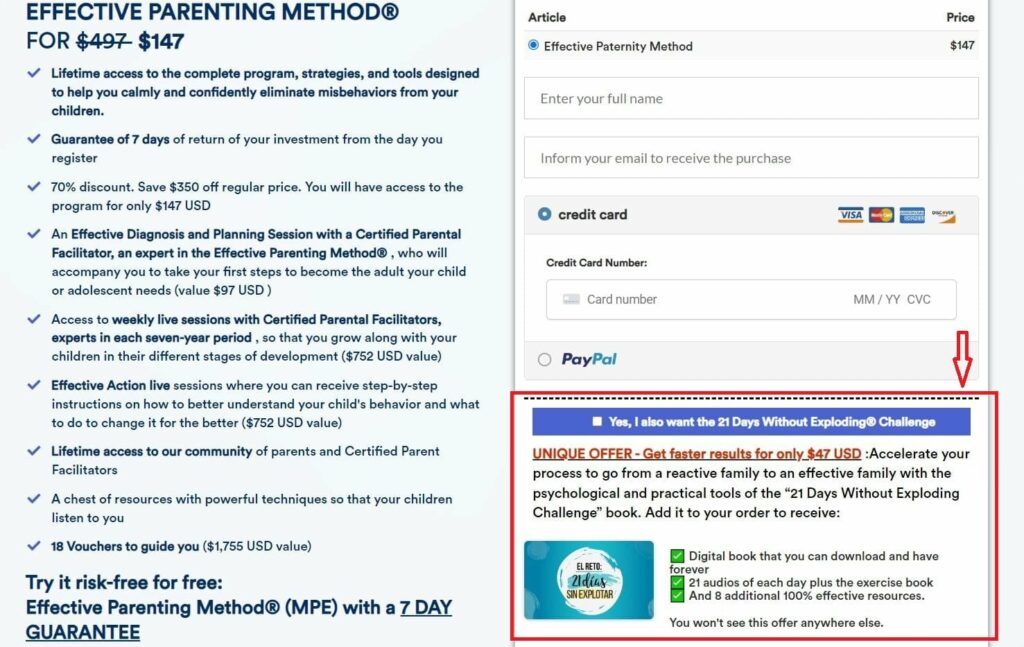
Cross-selling is a super powerful sales technique for increasing revenue. It allows you to sell more to existing customers without having to acquire new ones.
Another big benefit to cross-selling is it tends to improve customer satisfaction.
When you cross-sell you help existing customers find new complementary products that they might not have even known they needed.
What is Upselling?
Upselling is when you suggest your customer buy a fancier or upgraded version of what they’re already interested in.

You can do this by talking up the benefits of the pricier product or showing how it better suits your customer’s needs.
Again, consider the example of a customer buying an online course.
The perfect upsell could be a more in-depth and expansive course on the same topic.
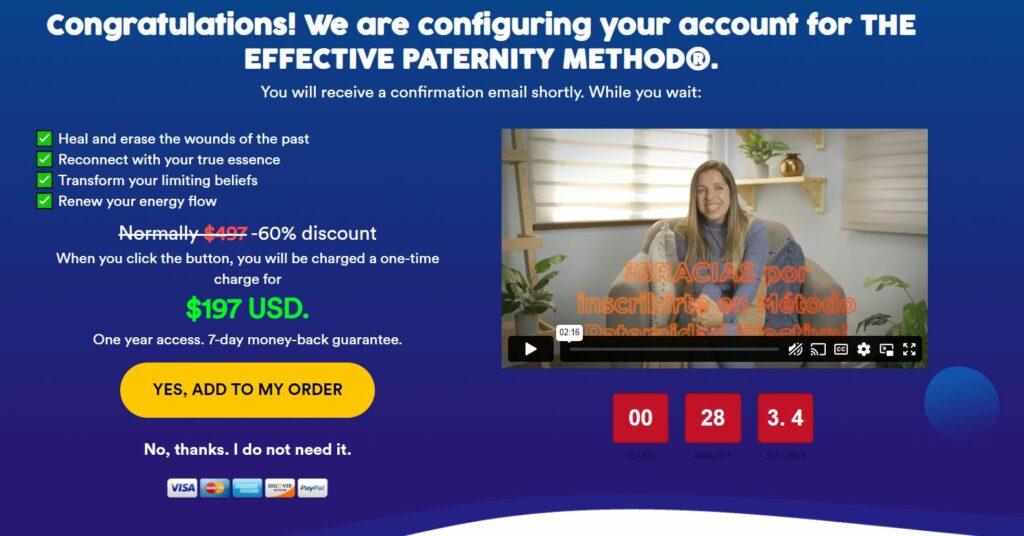
Or you could upsell your customer a membership that gives them access to exclusive content.
Upselling is a great way to increase your revenue per customer because it allows you to sell higher-priced products or services.
And in turn, these higher-price sales increase your profit margin.
But be careful not to push too hard with your upsells. You don’t want your customer to feel like they’re being taken advantage of or having something forced on them.
A good upsell should always be about helping the customer find the best solution for them.
The Key Differences between Cross-Sells and Upsells
The main difference between cross-selling and upselling has to do with your sales strategy. It’s all about what you offer and when you offer it.
Cross-selling involves offering complementary products or services. For example, fries with a burger.
While upselling involves offering a more expensive version of the product being considered. For example, upgrading to a “value meal.”
Timing is also a big factor in the difference between any upsell and cross-sell strategy.
Cross-selling typically takes place during or immediately after the initial purchase. While upselling occurs during the buying process.
Remember, even though these two techniques are similar, they are not the same.
You need to approach them differently for the best results. Understanding how cross-selling and upselling can benefit your business and your customers will help you get the most out of both
The Importance of Cross-Selling and Upselling for online businesses
There are a few big reasons cross-selling, and upselling are vital to the health of your online business.
On average, the businesses we work with see a 53% increase in revenue from cross-selling and upselling.
But, these sales techniques don’t only help you make a lot more moolah.
They also improve customer satisfaction. And they can improve customer retention.
Let’s examine how this works.
Benefits of Cross-Selling and Upselling
Cross-selling is great for increasing your average order value. When you suggest related products or services, you encourage customers to add more to their shopping cart. Plus, cross-selling can show customers that you understand their wants and needs, which can make them feel extra special.
Upselling, on the other hand, is great for padding your profit margins and leading your customers up your product ladder. It allows your most eager customers to go right for your premium or VIP packages.
Selling more of your top-end products increases your sales totals quickly. It also boosts the pool of existing customers who buy your most expensive offers and buy most often. And the more loyal returning customers you can attract, the healthier your business.
Why a Mix of Both is Ideal
Cross-selling and upselling serve different purposes.
And your cross-selling strategy will differ from your upselling strategy.
But it’s using a mix of both that will do the most for your business.
That’s why you should use these sales techniques in tandem.
Use cross-sells to suggest complementary products that bump AOV.
And use upsells to promote premium products that offer a powerful boost to your sales totals
Suggesting good complimentary cross-sells can help elevate customer satisfaction.
Using upsells to attract VIP customers will skyrocket your customer retention.
The bottom line is that combining your cross-sells and upsells is one of the quickest paths to more revenue, more sales, and more loyal customers.
Here are some tips to ensure successful cross-selling:
Effective cross-selling starts with one focus.
Know Your Audience
Understanding your audience is essential to cross-selling. To get to know your customers’ wants and needs, use customer data and feedback.
Purchase history can also give you valuable information about what products your customers are interested in. If two items are frequently purchased together, they can make great complimentary cross-sells.
Surveys are another way to understand your audience better. With surveys, you can find out what complimentary items your customers like the most. Or you can use a post-purchase questionnaire to learn why your customers did or did not take your cross-sell offer.
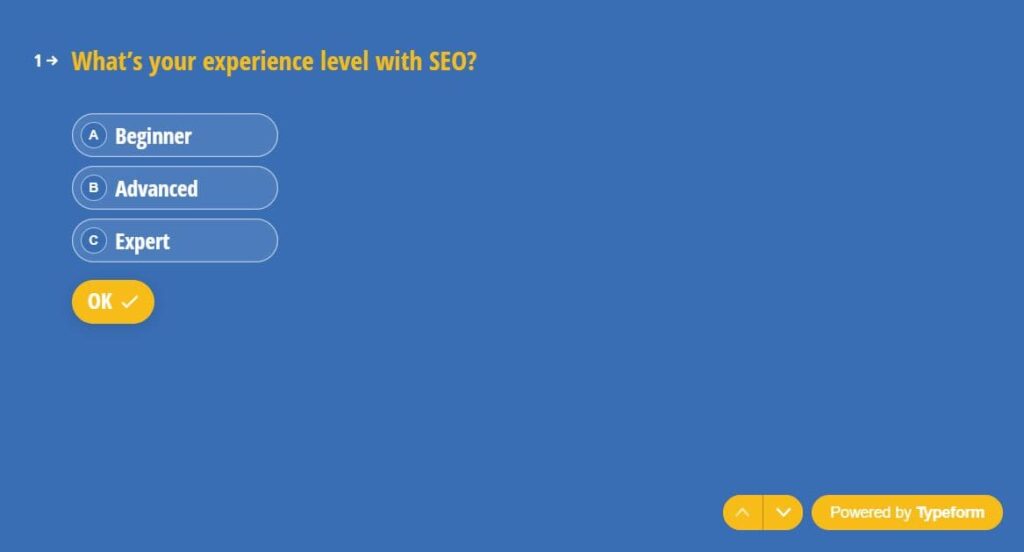
Understand the Customer Journey
The customer journey is about knowing where your shoppers are in the buying process and offering them products that fit their needs at that time.
For example, if your customer is buying a beginner course on speaking French, cross-selling them a course on advanced Russian doesn’t make much sense.
But you could cross-sell them a handbook of “Everyday French Phrases.”
One way to map out your cross-sell (or upsell) offers that best fit your customers’ needs is to create a product ladder.
You create a product ladder by sequencing your offers so they match the customer journey.
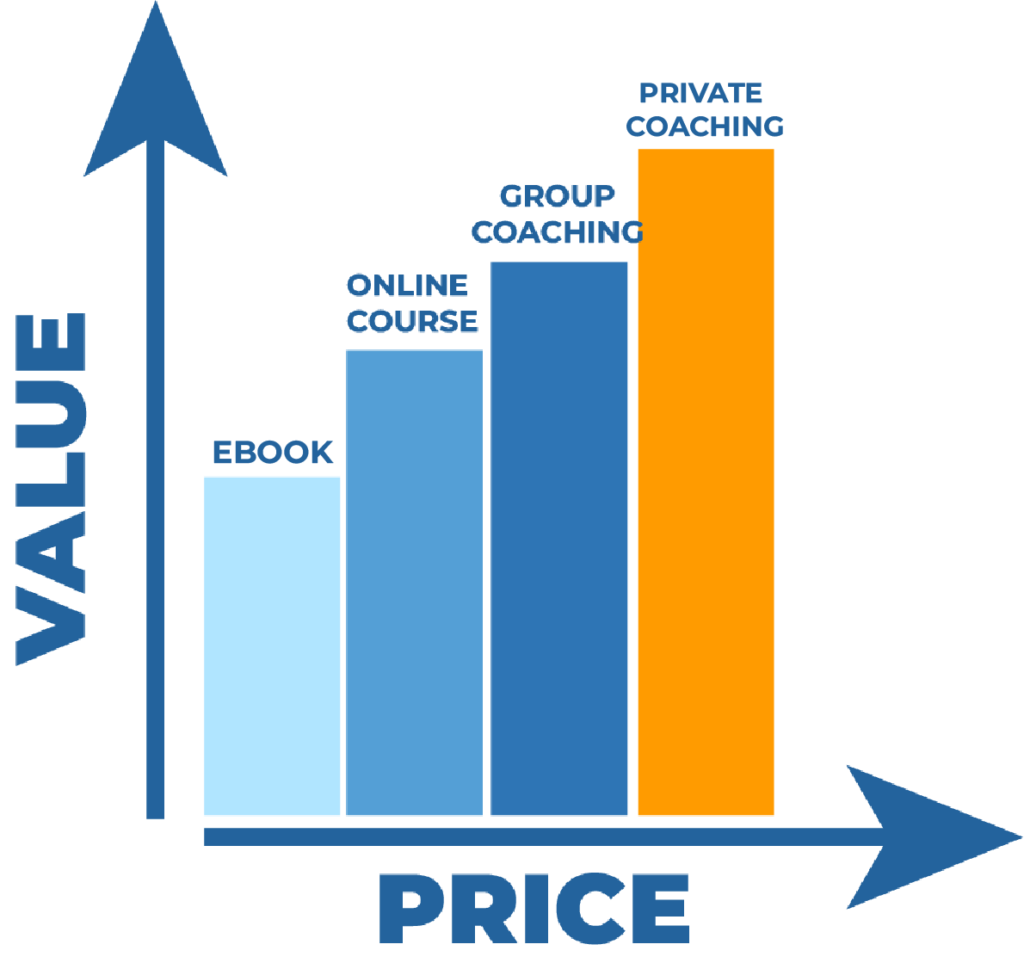
Each rung, or offer, on your product ladder should help your customer get closer to their primary goal faster or with more confidence and command.
Suggest Relevant and Complementary Products
When cross-selling, it’s essential to suggest products that complement the initial purchase or solve related problems.
For instance, look at the following example.
This business is selling dog owners training programs for dog obedience.
As a compliment or cross-sell, they are offering a specific course on getting your dog to come to you when called.
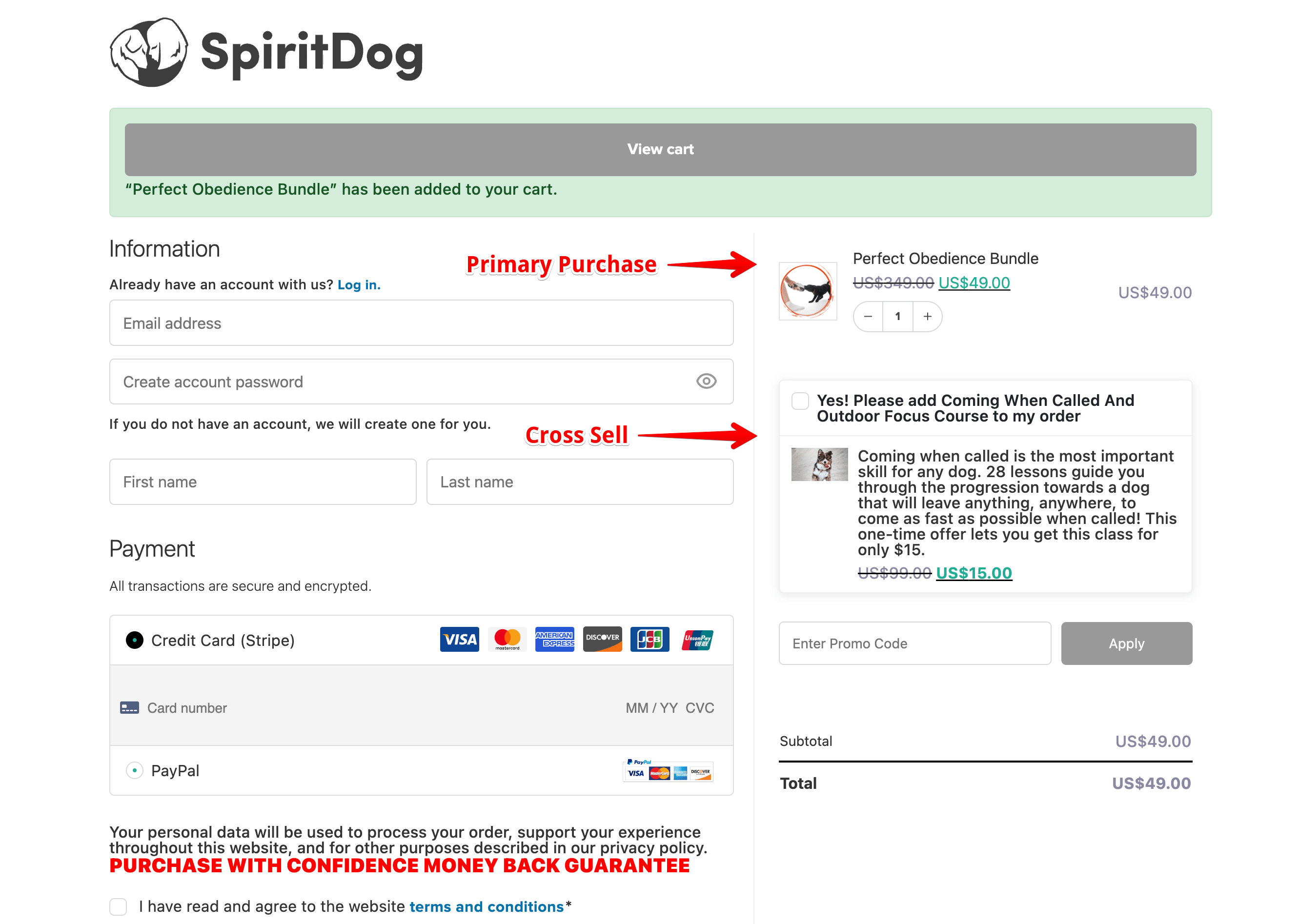
The reason this offer is effective is it’s complimentary.
It helps the customer get closer to achieving their primary goal, a well-behaved dog.
Timing is Key
Timing is everything when it comes to cross-selling.
You don’t want to offer additional products too early, and you don’t want to wait too long either.
Suggesting products at the right moment increases the chances of customers accepting your offer.
For example, if a customer is adding products to their cart, you can offer related products before they check out.

Real Life Examples of Cross-Selling Techniques
In the dog training example we talked about above, the seller offers customers an extra product on the oder page.
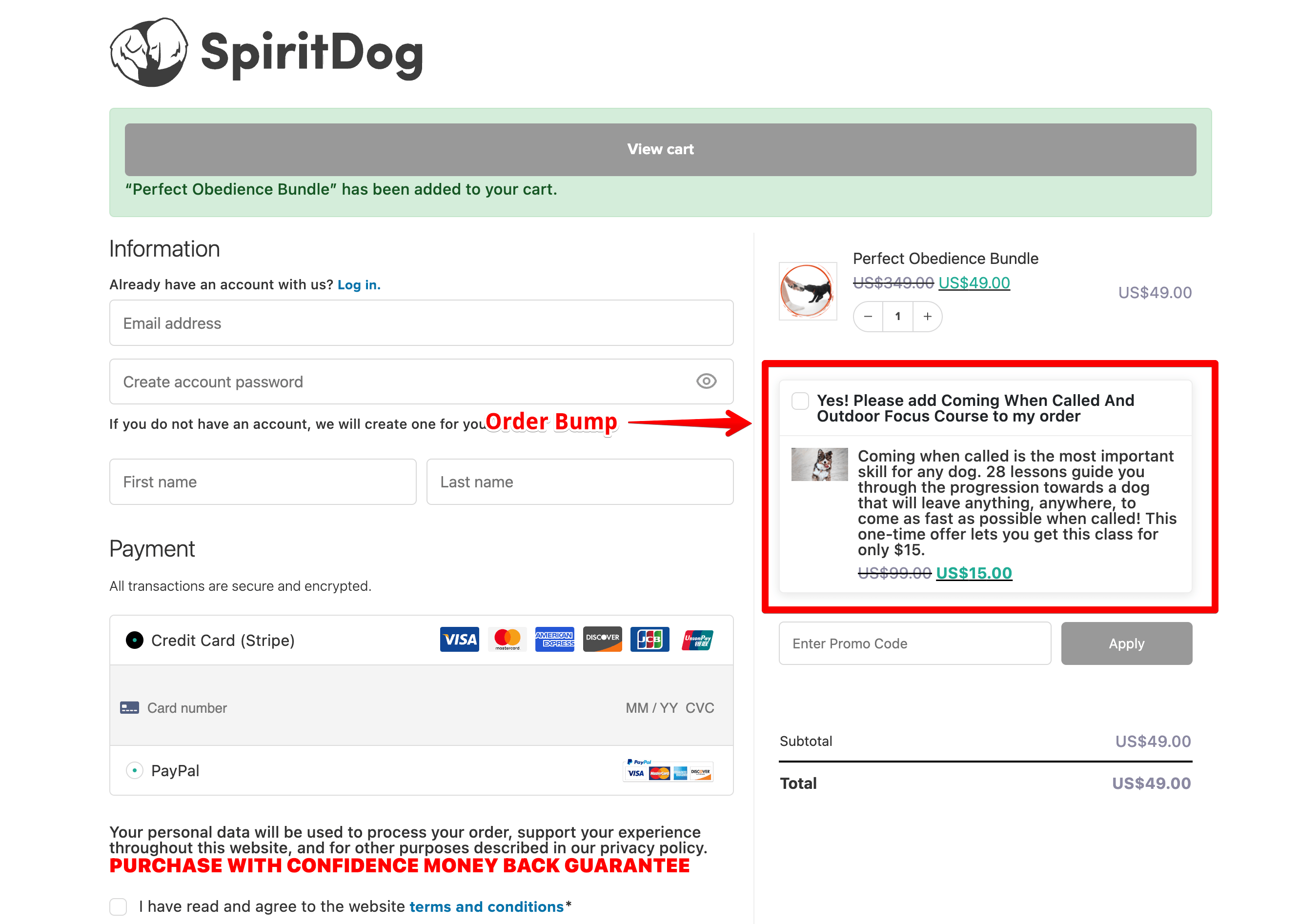
This technique is called an “order bump.” Basically, the customer just has to click a checkbox to accept the offer and add it to their order. This “bumps” up the total value of their purchase. (If you want to know more about order bumps, click here.)
Another way online businesses can use cross-sells is by helping their customers create bundles.
This is especially useful for sellers who offer physical items that require choices, like sizes or color varieties.
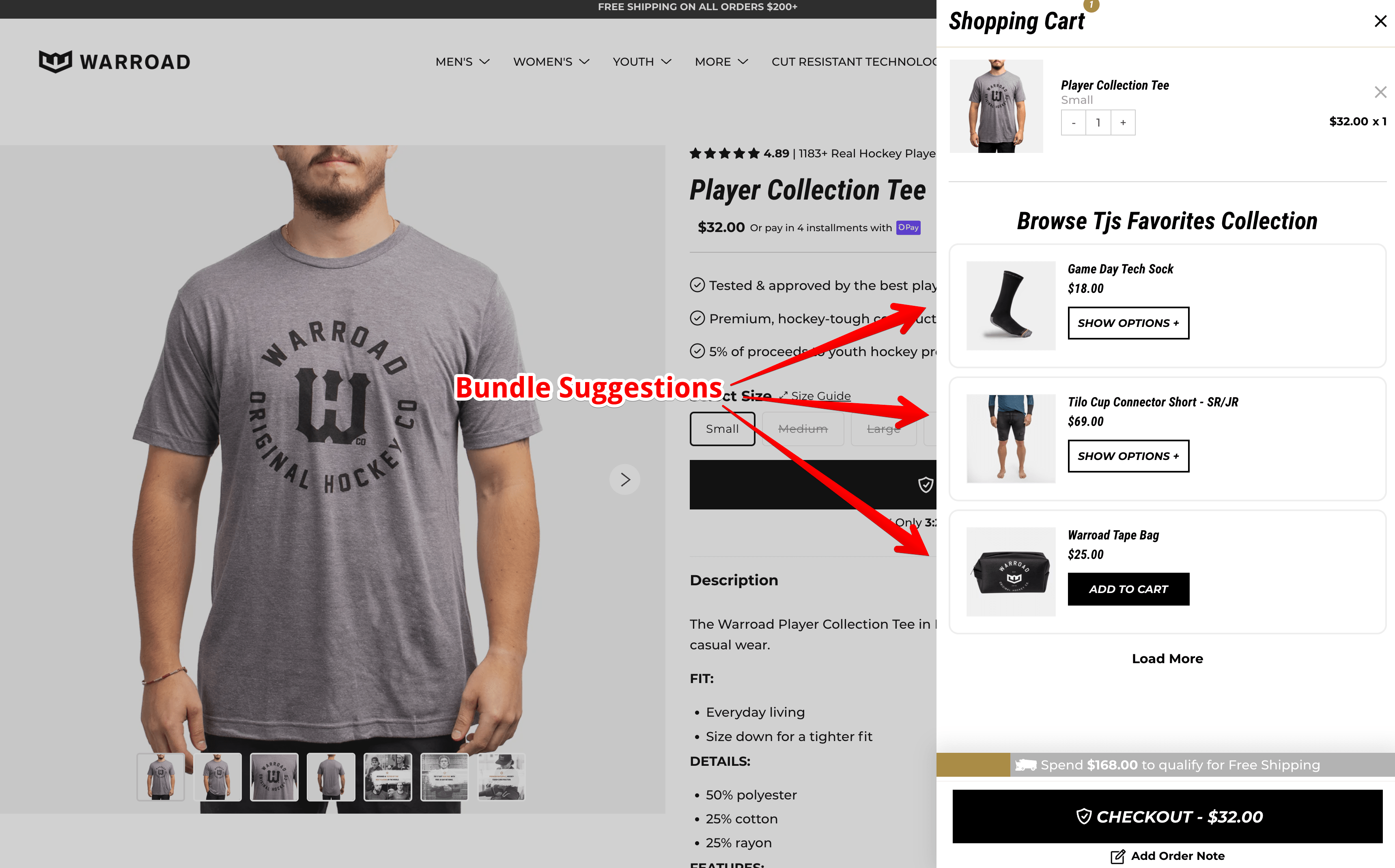
Bundling is more common for merchants who sell physical goods that have size and color options.
Whereas order bumps are more common and more effective for digital products.
Whether you choose to order bump or bundle, remember that your cross-sells should add value to the customer’s experience, not just increase your sales.
Focus on your customer’s primary goal. And offer cross-sells that help your customers achieve that goal faster or better.
Tips for Successful Upselling
Here are some tips to help you succeed with upsells:
Offer Genuine Value
First things first. Make sure you’re offering something of genuine value to your customers. Don’t just try to upsell them something more expensive for the sake of it.
Instead, suggest upgrades or add-ons that will truly enhance their experience and provide real benefits.
Demonstrate the Value
It’s not enough to simply suggest an upsell. You need to demonstrate the value it will provide.
Give specific examples of how the upgrade or add-on will benefit the customer. And show them why your upsell is the logical next step in their customer journey.
Make it Easy to Upgrade
Make the upsell process as easy as possible for the customer. Don’t require them to jump through hoops or fill out lengthy forms to upgrade their purchase.
The most effective online upsells are post-purchase one-click offers.
Post-purchase upsells perform well because all the customer has to do to take them is click a button.
At this point in the buying process, the merchant has already accepted their payment information.
With one button click, the customer can upgrade or add to their order.
You can also offer upsells to your customers in the cart.
The most common way to upsell in the cart is by offering a “bundled” upgrade.

As with the post-purchase upsells, bundled upgrades perform the best when they are one-click options.
Follow Up with Upsell Offers
Another way to offer an upsell is to follow up with the customer after their initial order.
One of the best ways to follow up with an existing customer post-purchase is via email marketing.
However, be careful not to come across as pushy or spammy. Only offer additional products or services that are truly relevant and valuable to the customer.
Use Discounts and Promotions Wisely
Discounts and promotions can improve how well your upsells perform. But use them wisely.
Don’t offer discounts on premium products or services too frequently, or customers may start to expect them and hold off on purchasing until a discount is available.
Instead, use discounts strategically to incentivize customers to upgrade or purchase additional items.
For example, only offer a discount on a premium version of a product if the customer purchases it at the same time as their initial purchase.
The bottom line when it comes to cross-sells and upsells
Businesses can benefit from both cross-selling and upselling. However, it’s crucial to understand the differences between them and when to use each.
Upselling centers on boosting the value of one purchase. While cross-selling aims to increase the total number of items bought by a customer. That said, both of these sales techniques are great for increasing your average order value.
To cross-sell and upsell successfully, you need to know your audience, model your offers to the customer’s journey, and offer relevant products. By combining cross-selling and upselling techniques, you can enhance customer satisfaction and increase your revenue.


